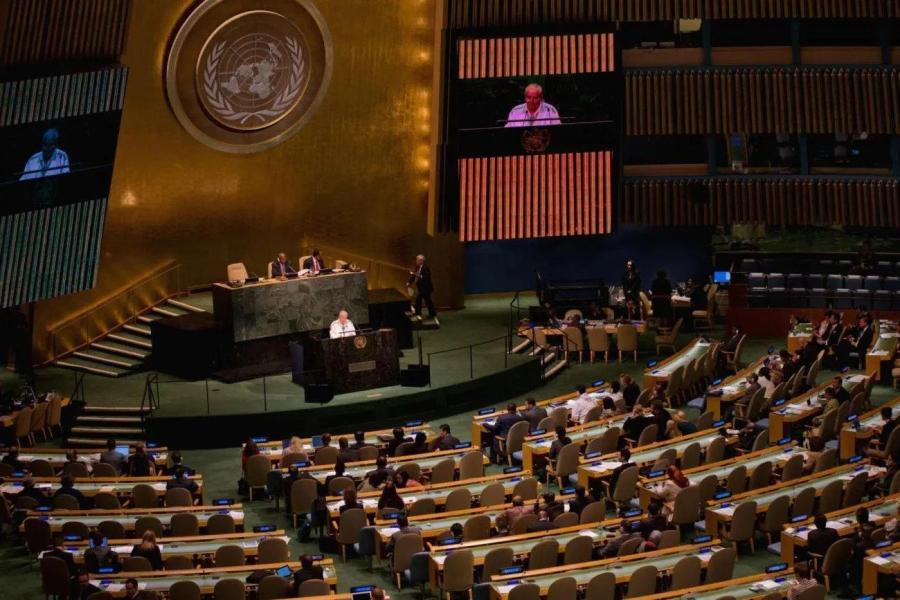
Reposted from www.sirgecoalition.org.
Indigenous Peoples’ right to Free, Prior and Informed Consent (FPIC) provides a framework for the considerations and processes required when investors and governments seek to develop projects that may affect Indigenous communities, lands, territories, and resources. For this reason, Indigenous leaders must be prepared to advocate for their individual communities' FPIC priorities on their own terms from a fully informed and proactive position.
The SIRGE Coalition published Securing Indigenous Peoples' Right to Self-Determination: A Guide on Free, Prior and Informed Consent (in english, en español, em português, en français, На русском) to support Indigenous Peoples in navigating the many considerations when developing FPIC protocols to secure their self-determined priorities.
The guide is divided into four sections. The first section, Indigenous Peoples’ Right to Free, Prior & Informed Consent defines FPIC and discusses how Indigenous Peoples are proactively drafting their protocols that set the course of any future FPIC engagements.
The second section, Preparing in Advance: Before Engagement Begins provides preparatory steps that Indigenous Peoples can take, as well as actions to understand who project developers are and who is funding them.
The third section, The Negotiation Process offers guidance on negotiating with external parties and when and whether to get legal and technical support.
The fourth section, After the Decision About FPIC: Next Steps shares follow-up steps after consent is given, withheld or being considered. This includes information about what Indigenous Peoples can do to protect their rights if they have chosen to consent or to defend their decision if consent is withheld.
USING THE FPIC GUIDE
Indigenous Peoples have the right to determine all aspects of their FPIC, including consultation protocols, how and when decisions will be made, and whether or not to give consent. However, in many cases, government officials and companies try to lead and control the FPIC process. For example, company representatives may arrive with government officials and tell an Indigenous community that they are being "consulted" and try to pressure or coerce the community into giving consent. They may also withhold information making it difficult for communities to fully understand the projects. In these circumstances, FPIC is not adhered to. As such, it's important to prepare for potential future engagements around FPIC.
The second section of the FPIC guide provides recommendations such as taking the time to understand your legal rights, drafting your own FPIC protocols, creating a plan for addressing differing opinions within your community, and defining your vision of a strong community that is ready for investors when they seek your resources. For example, when an investor approaches your community, it's essential to immediately learn as much as you can about the proposed project and take all potential implications into account. Make sure you have information on how the project can impact the lives of your community, your environment, and your resources. It's best to seek support from legal and technical professionals which you can try to find from an organization at a free or low cost.

The guide provides recommendations such as taking the time to understand your legal rights, drafting your own FPIC protocols, creating a plan for addressing conflicting opinions within your community, and defining your vision of a strong community that is ready for when investors arrive to seek your resources.
Talking to your community about how to respond to project developers and investors about potential future projects is crucial to do ahead of time. You'll want to discuss your community's priorities, including how you want to flourish and are you willing to allow investors to use your land. Consider how to address and integrate different opinions from the community, formulate a conflict resolution system, and create a communication plan both within your community and for external engagements. Appendix D of the FPIC guide provides an activity for communities to clarify a unified future vision.
To help determine your formal rights to your land, it may be necessary to connect with a trusted lawyer, paralegal, or advocate for information on environmental law, forest law, water law, subsoil resources law, contract law, investment law, and compulsory acquisition law. The FPIC guide has a list of groups that can connect you to national and international organizations that support these services in Appendix E.
You'll also want to look into the government processes for approving investment projects so that you can request proof from a potential investor or developer that they're adhering to government protocols and laws. Additionally, conducting research on urban and rural land markets in the country where your territory is located will help to understand how external parties valuate the land and how to make the case when land does not have monetary value, such as for sacred and culturally significant land. You can then communicate this to investors and government officials in negotiations. If the proposed project involves extracting resources, you'll want to take this into account as well and research the market value on those resources. The FPIC guide shares information on how to calculate the value of resources you are gathering from your lands in Appendix C.
INDIGENOUS-DESIGNED FPIC PROTOCOLS
The FPIC guide can also support your community in creating your own FPIC protocols. Section two highlights some of the elements the protocol may include, such as an introduction that details your history as an Indigenous People, your unique ties to your lands, and a description of how your traditional livelihoods are interwoven with your land. You can also include in your protocol the projects and activities your community will not consent to and why they would be prohibited. Describe how these activities would be a threat to the lives of your community members and your culture.
To help build the foundation of an FPIC engagement, consider adding preconditions for consultations in your protocol, such as recognition of your territories and resources and acknowledgment and respect of your legal rights and governance by all parties. Adding a code of conduct aligned with your cultural etiquette sets expectations of how people treat and speak to one another during engagements. Defining these elements at the beginning of engagements can clarify for investors and companies your priorities when state actors don’t recognize Indigenous Peoples or don’t respect Indigenous Peoples’ rights.
As mentioned in the guide, your protocol might list the full range of practices that would automatically nullify an FPIC engagement. For example the use of violence, threats, harassment, intimidation, arrests, persecution, presence of armed forces, bribery, withholding critical information, falsification of proof of consent, refusal to recognize your rights, or intentionally trying to cause division within your community or between your community and others. You might also want to add that permits and licenses cannot be granted before an FPIC process has been initiated.
When creating your protocol, you can set the timeline for an FPIC engagement at every stage. Consider how long your community needs to make decisions based on your processes and outline the various steps of how the engagement will proceed. Your protocol can also entail the logistics of all meetings, such as location, who's involved, who's leading and planning the meetings, what funding will cover each stage and the obligation of investors to absorb the costs, and that meetings will be held in your language with translations provided for non-speakers. Furthermore, your protocol can require that information is provided in both oral and written forms that are accurately translated into your language.
Conclusion
The right to FPIC flows from Indigenous Peoples’ self-determination, and as such ensures participation in projects where there may be impacts and safeguards the full spectrum of Indigenous Peoples’ rights, including land rights, collective rights, participatory rights, and food and water security rights.
Whether an Indigenous community is defining their FPIC priorities for the first time or whether an Indigenous leader is considering next steps in corporate or government-to-government engagements, this guide outlines the extensive considerations necessary to ensure the respect of Indigenous Peoples’ FPIC protocols in the public and private sectors.

Community monitoring investor compliance with the agreed contract/investment terms.
Illustrations by Özgür Uğuz via Securing Indigenous Peoples' Right to Self-Determination: A Guide on Free, Prior and Informed Consent.



